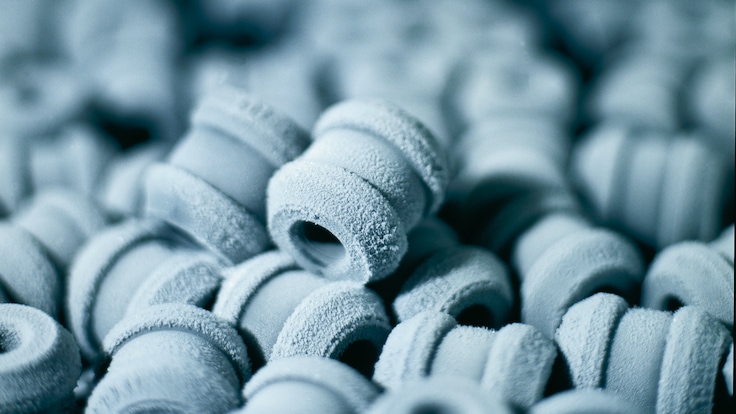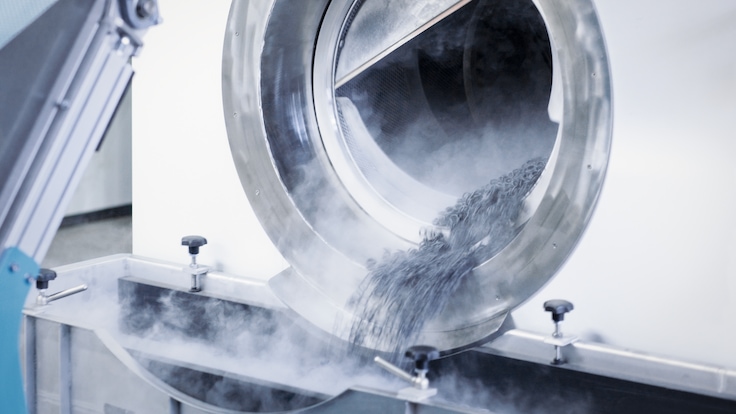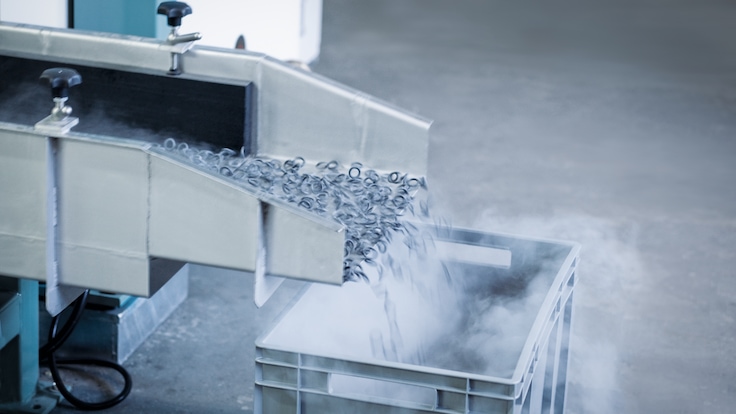CO2 Supply Solutions for Deflashing & Deburring
Cryogenic Solutions for an Ideal Finish on Rubber Parts

Why Deflash?
Parts molded from plastics and rubber can be prone to the formation of flash. This can occur in the space between mold cavity edges, otherwise known as the parting line. This space or parting line could be the result of a number of factors, including complex part geometries (i.e. many mating surfaces), old mold cavities that no longer fit together tightly, stresses generated by the molding tool (thermal, mechanical, etc.) or simply wear and tear on the tool.
We have developed automated, non-abrasive solutions that help you effectively remove flash from plastic parts to consistently high quality standards. Unlike conventional flash cleaning methods, which entail often tedious and ineffective manual processes that rely on chemicals and handheld tools, our deflashing solutions do not require any hazardous substances and thus contribute to operator safety.

You can choose between the following two techniques:
- Cryogenic deflashing based on liquid nitrogen (LIN), using freezing, tumbling and blasting action to remove flash from injection-molded plastic parts
- CRYOCLEAN® Snow using carbon dioxide particles (dry ice) at a temperature of -78.5°C as a blasting agent to deburr/deflash plastic parts

Broad Application Spectrum
Our deflashing applications are effective for parts molded from the widest range of materials, including nylon, rubber, silicone rubber, polyurethane, neoprene, liquid crystal polymer, urethane, Viton, polycarbonate, PTFE, PPS, Delrin, polypropylene, EPDM, nitrile, butyl, DAP, ABS, PEEK, acetal and elastomer, and also for precision parts made with zinc and aluminum die cast.